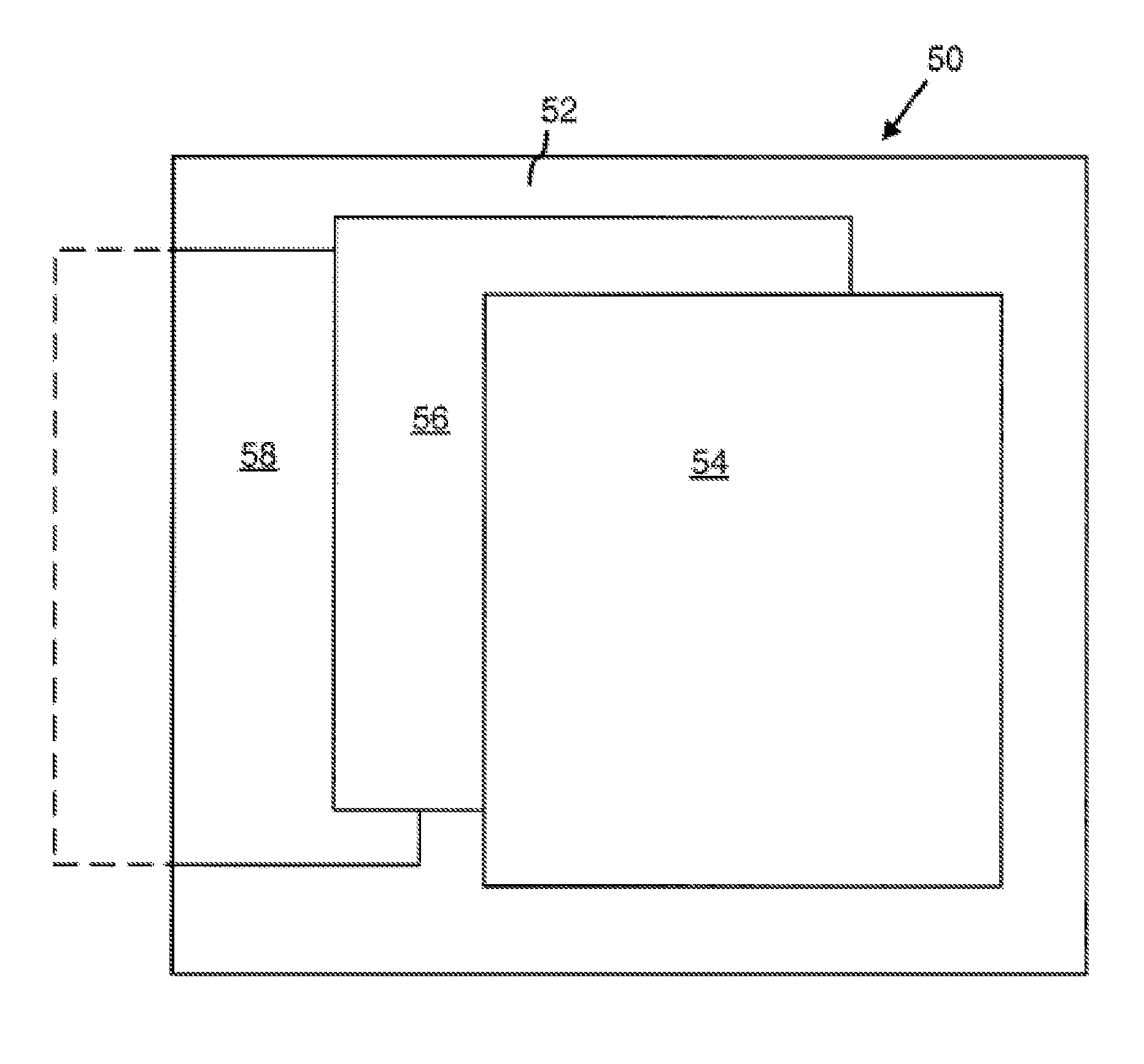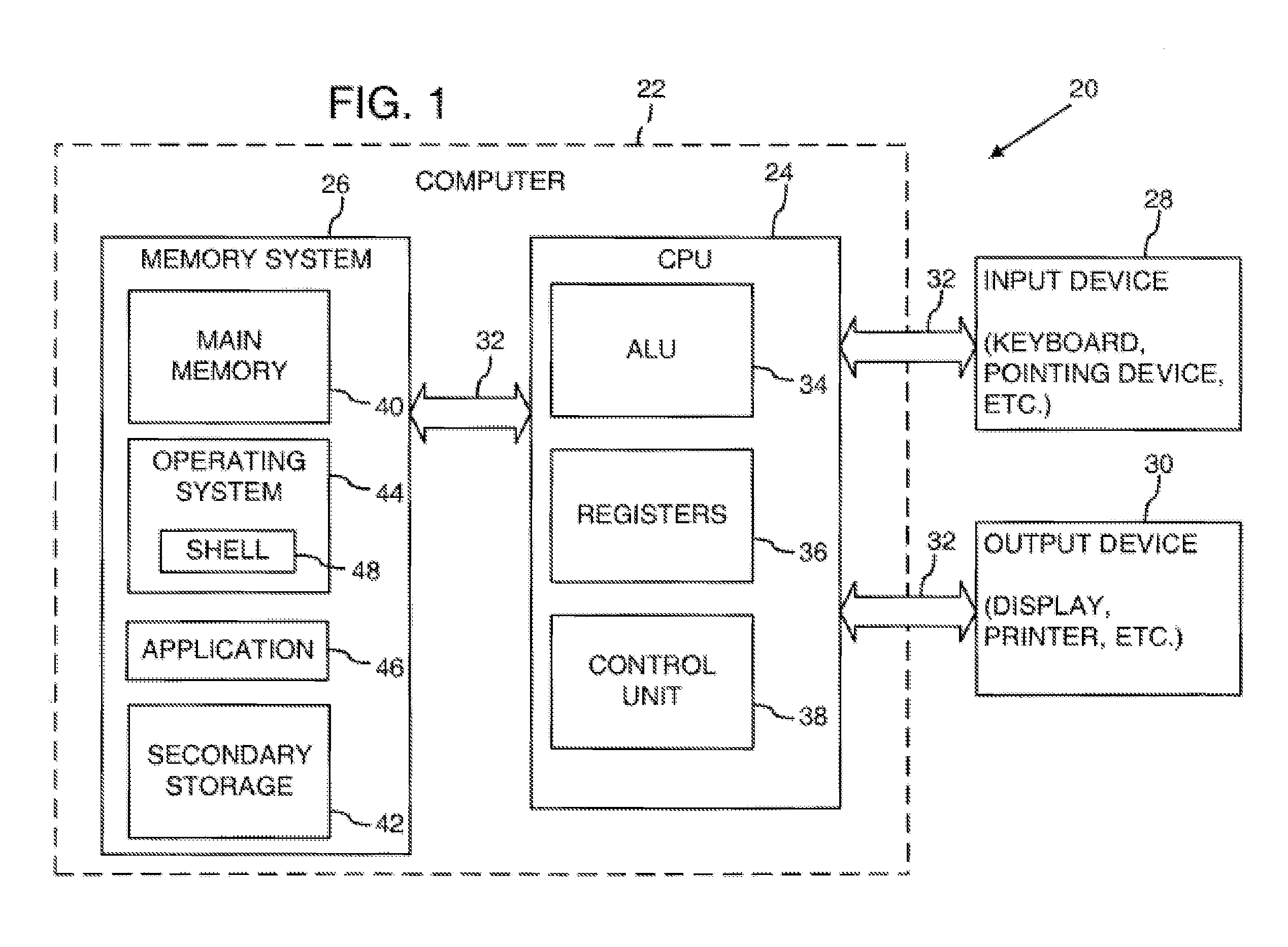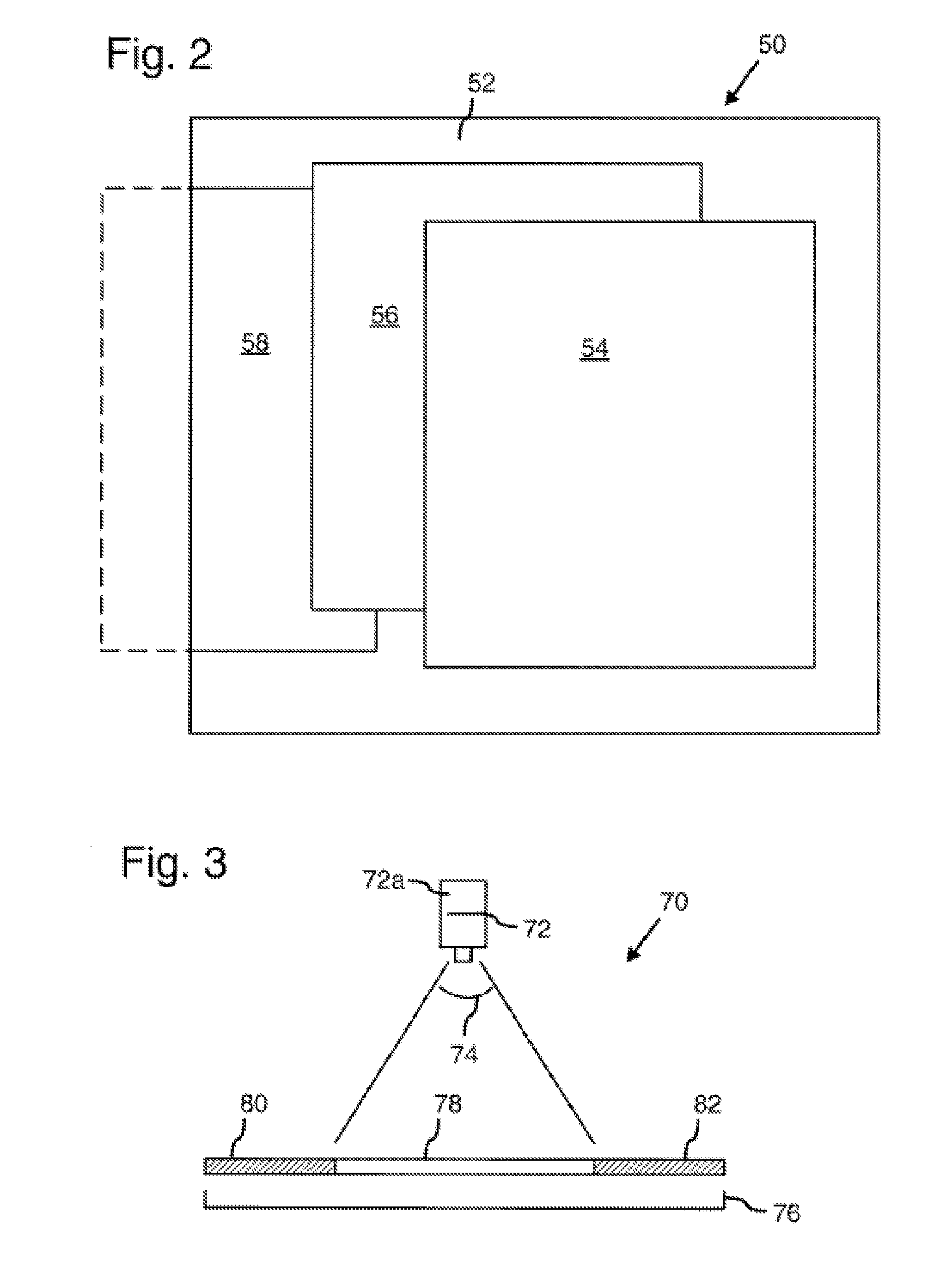Peek Around User Interface
a user interface and user technology, applied in the field of graphical user interfaces, can solve the problems of limiting the ability of operating system shells to render multiple windows, tools, icons, etc. simultaneously, and the physical dimensions of the computer display screen are much more limited
- Summary
- Abstract
- Description
- Claims
- Application Information
AI Technical Summary
Benefits of technology
Problems solved by technology
Method used
Image
Examples
Embodiment Construction
[0025]FIG. 1 illustrates an operating environment for an embodiment of the present invention as a computer system 20 with a computer 22 that comprises at least one high speed processing unit (CPU) 24 in conjunction with a memory system 26, an input device 28, and an output device 30. These elements are interconnected by at least one bus structure 32.
[0026]The illustrated CPU 24 is of familiar design and includes an ALU 34 for performing computations, a collection of registers 36 for temporary storage of data and instructions, and a control unit 38 for controlling operation of the system 20. The CPU 24 may be a processor having any of a variety of architectures including Alpha from Digital, MIPS from MIPS Technology, NEC, IDT, Siemens, and others, x86 from Intel and others, including Cyrix, AMD, and Nexgen, and the PowerPC from IBM and Motorola.
[0027]The memory system 26 generally includes high-speed main memory 40 in the form of a medium such as random access memory (RAM) and read o...
PUM
 Login to View More
Login to View More Abstract
Description
Claims
Application Information
 Login to View More
Login to View More - R&D
- Intellectual Property
- Life Sciences
- Materials
- Tech Scout
- Unparalleled Data Quality
- Higher Quality Content
- 60% Fewer Hallucinations
Browse by: Latest US Patents, China's latest patents, Technical Efficacy Thesaurus, Application Domain, Technology Topic, Popular Technical Reports.
© 2025 PatSnap. All rights reserved.Legal|Privacy policy|Modern Slavery Act Transparency Statement|Sitemap|About US| Contact US: help@patsnap.com



